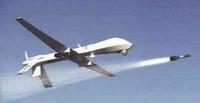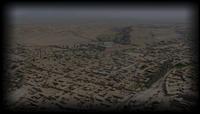-
Restricting license plate readers undermines law enforcement: study
White paper argues that Massachusetts legislation restricting the use of license plate readers (LPRs) is rooted in exaggerated fears and misconceptions, and will reduce effectiveness of LPR technology and weaken law-enforcement’s efforts to pursue criminals.
-
-
Reducing security threats from explosives
Researchers, as part of the Awareness and Localization of Explosives-Related Threats center (ALERT), a DHS Center of Excellence, are working on ways to detect explosives and neutralize their impact. The researchers are developing portable detectors as well as larger systems to scan for explosives. Some technologies will analyze the spectrum of light shining through vaporized samples; others will analyze solid residues.
-
-
Violent hate crimes, lone-wolf terrorism share characteristics
Researchers examined the timing, locations, methods, targets, and geographic distributions of lone-actor terrorist attacks, group-based terrorist attacks, and violent hate crimes that occurred in the United States between 1992 and 2010. They found that locations where the 101 lone-actor terrorism incidents occurred shared more demographic similarities with the locations of the 46,000 violent hate crimes than with the locations of 424 group-based terrorist attacks over the time period.
-
-
New technology spots killer waves
Sailors throughout the ages have wished they could predict the strength and size of the next wave. The Environmental and Ship Motion Forecasting (ESMF) system, a Future Naval Capability effort supported by the Office of Naval Research’s (ONR) Sea Warfare and Weapons Department, seeks to provide sea-based forces with new capabilities for difficult operations like ship-to-ship transfer of personnel, vehicles, or materiel — giving operators sea condition information at levels of accuracy never possible before.
-
-
Building disaster-relief phone apps on the fly
Researchers combine powerful new Web standards with the intuitive, graphical MIT App Inventor to aid relief workers with little programming expertise.
-
-
NIST seeks comments on structure of forensic science guidance groups
The National Institute of Standards and Technology (NIST) is seeking input on the structure of guidance groups which would promote scientific validity and reliability in forensic science.
-
-
Innovations help lighten the load for marines
The Office of Naval Research (ONR) was at the Modern Day Marine exposition last week, showcasing some of the newest technologies it has helped develop to give sailors and marines the edge. The Expeditionary Maneuver Warfare and Combating Terrorism Department at ONR highlighted its focused initiatives to lighten the load for marines, including integrated day/night vision sights, scalable body armor, and other research which will help marines out-think, out-maneuver, and out-perform the enemy.
-
-
Syria’s chemical weapons can be destroyed within nine months: experts
Weapons experts from the United States and Russia say most of Syria’s chemical weapons stockpile are kept as unweaponized liquid precursors, and thus could be neutralized in a short period of time without the risk that toxins could be stashed away by the regime for future use, or stolen by terrorists. A confidential assessment by the United States and Russia concludes that Syria’s entire arsenal could be destroyed in about nine months, assuming that Syrian officials fully cooperate with the weapons inspectors.
-
-
DARPA Young Faculty meet next generation of Army tech users
Recipients of the DARPA Young Faculty Award (YFA) visited the United States Military Academy at West Point during its first Branch Week, 10-15 September 2013. The event brought “several hundred tons of military equipment, vehicles and weapons for the academy’s spin on a college career fair,” one observer said.
-
-
Number of U.S. drone strikes in Pakistan, Yemen significantly reduced
In the past several months, the United States has reduced the number of drone strikes on terrorist targets in Pakistan and Yemen. The United States launched 117 drone strikes in Pakistan in 2010, compared to twenty-one so far this year. Representative Mike Rogers (R-Michigan), chairman of the House Permanent Select Committee on Intelligence, is concerned. “[The threat of terrorism is] not diminishing,” he said. “There have been counterterrorism changes made by the administration that have concerned us all, things that we’ve been working on for a period of months that we’re trying to work through that are very, very concerning. This is no time to retreat.”
-
-
How Sandy has changed storm warning procedures
Superstorm Sandy slammed against the U.S. Eastern Seaboard in October 2012, inundating iconic communities. Those communities have been rebuilding since then and things are almost back to normal for most. Something else, however, has had to be rebuilt as well: the structured procedures for issuing warnings. The goal is to help communities better comprehend what natural disasters will bring their doorsteps.
-
-
Al Qaeda increases efforts to defeat U.S. drones

Drone attacks have been an important part of America’s war against terrorism. These airstrikes have considerably limited the movements and operational freedom of al Qaeda operatives and other militants in Pakistan, Afghanistan, Yemen, and Somalia. Al Qaeda has been exploring strategies and experts to allow it to counter America’s drone campaign.
-
-
More Americans see their electronic equipment seized by DHS at the border
The American Civil Liberties Union (ACLU) has released details of an investigation showing how U.S. law enforcement and other agencies exceed their powers in the name of homeland security. The ACLU points to the practice of the U.S. border agents searching and seizing the electronic devices of Americans at the border. Public data shows that more Americans are having their electronic devices searched.
-
-
Conference marks opening of UMass Lowell’s new Center for Terrorism and Security Studies
Top counterterrorism and law enforcement officials and leading researchers are today (Tuesday) gathering at UMass Lowell to discuss the challenges they face in protecting the public and their work to find solutions to security threats. The event marks the opening of UMass Lowell’s new Center for Terrorism and Security Studies.
-
-
Compact aerostat offers affordable, portable surveillance solution

Columbia, Maryland-based TCOM last week unveiled its newest aerostat platform, the 12M Tactical Aerostat. The system is designed to meet the needs of soldiers and first responders who require a compact, affordable, persistent surveillance solution which can be transported anywhere, rapidly deployed, and easily retrieved.
-
More headlines
The long view
Factories First: Winning the Drone War Before It Starts
Wars are won by factories before they are won on the battlefield,Martin C. Feldmann writes, noting that the United States lacks the manufacturing depth for the coming drone age. Rectifying this situation “will take far more than procurement tweaks,” Feldmann writes. “It demands a national-level, wartime-scale industrial mobilization.”
How Male Grievance Fuels Radicalization and Extremist Violence
Social extremism is evolving in reach and form. While traditional racial supremacy ideologies remain, contemporary movements are now often fueled by something more personal and emotionally resonant: male grievance.
The Surprising Reasons Floods and Other Disasters Are Deadlier at Night
It’s not just that it’s dark and people are asleep. Urban sprawl, confirmation bias, and other factors can play a role.
Why Flash Flood Warnings Will Continue to Go Unheeded
Experts say local education and community support are key to conveying risk.
